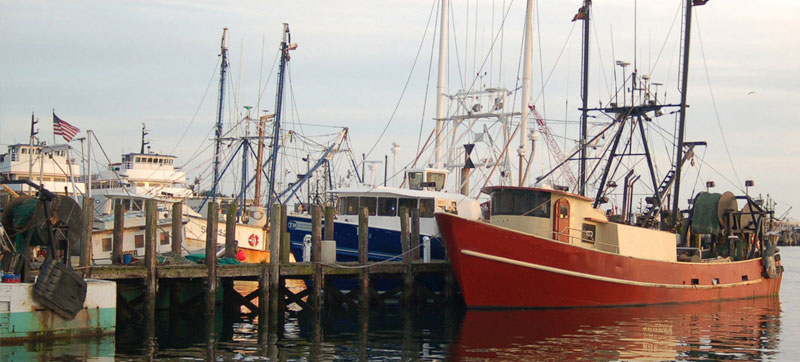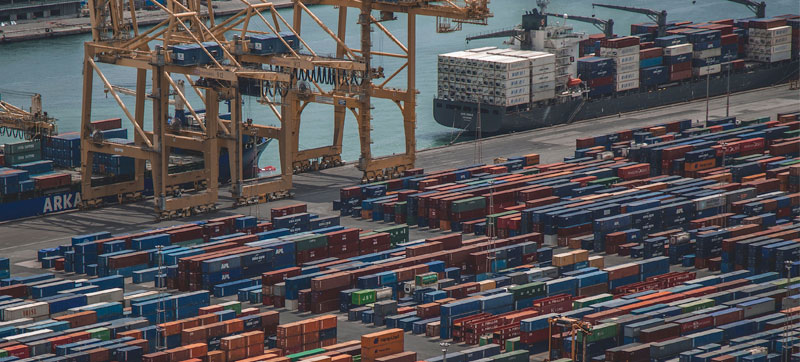The Working Edge: Part Three of a Seven Part Series on the Ocean Edge

This week we begin to present the ocean edge in thematic ways with The Working Edge, outlining the various social structures, industries, exchange, trade and more that were shaped by early settlement near the sea. The Working Edge is part 3 of a 7-part series dedicated to the ocean edge, exploring what takes place there, from the real to the symbolic.
When we speak about the ocean edge, we are discussing that circumferential line that delineates the terrestrial coasts, forming the invisible linear of confrontation and connection between land and sea. We have characterized the identity of those boundaries as “hard” and “soft,” engineered responses and social responses that are at once examples of mitigation of or adaptation to the dynamic circumstance of proximate earth and water.
We can also present the edge thematically, the amalgam of coherent activities that reflect both the reality and symbolic implication of what takes place there. We can talk about the working edge, the leisure edge, the security edge, the political edge, or the cultural edge. Each of these contextualize social behavior, organizational structure, and an expression of value as both personal and communal in any given alongshore place or time.
Let’s begin with the working edge. Historically, the distribution of settlement was drawn to natural harbors and shores where fishing and trade could be practiced in support of the people who lived there. This holds true for inland waters as well – the distribution of interior cities in similar location connected up or down stream to the ocean outlets and exchange beyond. The working coast was at first a secure place where a small boat could be dragged a shore, built and repaired, and re-launched as a source of food comparable to the harvest of the land. I once visited Lan Yu, an island off the south coast of Taiwan. I watch those fishers launch their wooden vessels from the shore, paddle through the waves engine-less to sail for several days toward Mindanao and the Philippines, lighting a fire on the bow deck at night to attract the fish toward the light and into the boat. I was there when they returned and was astonished by the minimal catch resulting from such hard work and danger.

As vessels got larger, bigger facilities were required to dock, load, maintain, construct, voyage, and trade – the seemingly simple elements of maritime exchange that linked together eventually all parts of the world as stages of what we now call “globalization.” Those piers and shipyards were alive with work and financial vitality. This enterprise built institutions, organizations, associations, and personal fortunes, and contributed to every aspect of social and political life everywhere on earth where and when people chose to settle by the sea. Breakwaters and cargo handling technology, financial exchanges, banks and trading companies, manufacturing firms, unions, connecting roads and canals, trains, city architecture, churches and cemeteries, civic and social institutions—all these functions and their physical and economic consequences were a direct, progressive reflection of the energy and accomplishment of the working coast. Indeed, the world was parsed and defined by energy generated by the connective power of the ocean.
History brought scale, further exploration, science and invention, confrontation, and imperial expansion to the world, again enabled as response to the value perceived and desired. Expeditions opened the last places; technology enabled us to explore beneath the surface of the sea; iron, steel, and steam transformed ships in size, speed, range, and power. Work, work, work – every aspect of this growth of centuries was powered by the human mind and hand applied to the opportunities offered by the sea and serviced from the land. One can look at the entirety of world history to now and reduce it to one word: maritime – defined as living or found in or near the ocean.
Here at the World Ocean Observatory we state as our primary assertion that the sea connects all things. But don’t understand that connection as purely geographical, but rather as the unity of effort that is the nature of work and which when applied well to purpose can build a world for the benefit of all mankind. That has not changed. It is applicable and necessary to the future even as work changes and technology creates new vocations. Today, people are migrating from inland to the coast; coasts are challenged by sea level rise and extreme weather; ports can become teleports and cyberports seemingly indifferent to traditional structures. But here is a fact not well known: today, almost all data, financial transactions, internet informational transfer, communications, and more move at light speed as a function of modern work through cables deep on the ocean floor where, invisible, they connect us still through coast to coast, underwater.
- - -
PETER NEILL is founder and director of the W2O and is author of The Once and Future Ocean: Notes Toward a New Hydraulic Society. He is also the host of World Ocean Radio upon which this blog is inspired.
- Login to post comments
-


